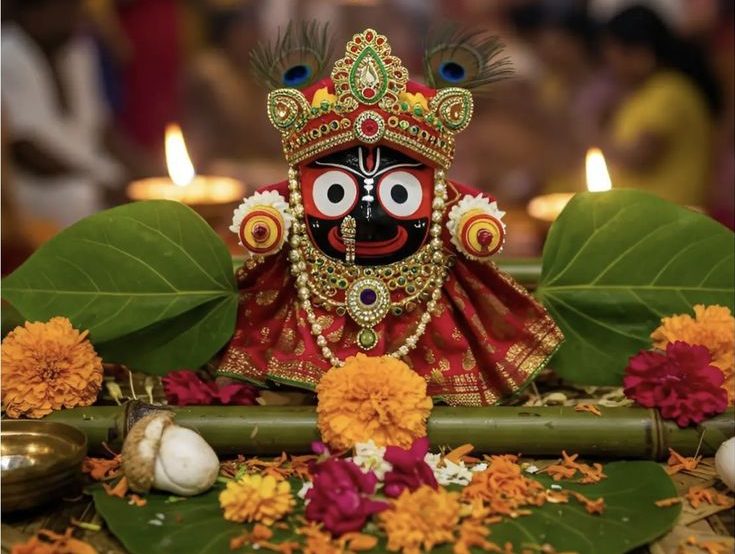Navakalevara is a rare and highly significant ritual observed at the Jagannath Temple in Puri, Odisha. This event involves the ceremonial renewal of the wooden idols of Lord Jagannath, Lord Balabhadra, Goddess Subhadra, and Sudarshana. The term “Navakalevara” comes from Sanskrit, where ‘Nava’ means “new” and ‘Kalevara’ means “body,” signifying the “new embodiment” or rebirth of the deities.
Frequency and Timing
Navakalevara is performed at intervals of 8, 12, or 19 years, depending on the occurrence of an extra lunar month (Adhikamasa) in the Hindu calendar, specifically when two Ashadha months fall in one year. The most recent Navakalevara took place in 2015.
Ritual Process
The ritual begins with the search (Banajaga Yatra) for sacred neem trees (Daru) that meet specific spiritual and physical criteria for carving new idols. Once identified, the trees are ritually cut, and the logs are transported to Puri, where skilled artisans carve the new deities.
The most secretive and spiritually significant part of the ritual is the transfer of the “Brahma Padartha” (the soul-substance or life force) from the old idols to the new ones, conducted in complete secrecy at midnight by select priests.
The old idols are then ceremonially buried in the temple’s Koili Baikuntha (a special burial ground within the temple complex). The new idols are installed in the sanctum, and after a period of seclusion and rituals, they are presented to devotees and participate in the annual Rath Yatra (Chariot Festival).
Cultural and Spiritual Significance
Navakalevara represents the cycle of death and rebirth, emphasizing the Hindu philosophical concepts of impermanence and spiritual continuity. The ritual reaffirms the living tradition of Jagannath worship and draws millions of devotees and pilgrims to Puri, making it one of the largest religious gatherings in India.
Feature Image Credit: Pinterest.
